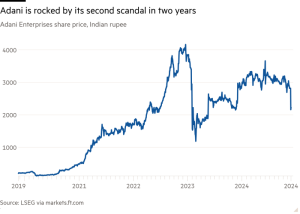Jean Tinguely exhibition review — artist who created poetry from motion
In March 1960, New York’s Museum of Modern Art invited Jean Tinguely to stage a performance in its sculpture garden. It was the Swiss artist’s “Homage to New York” and few among the audience knew what to expect. Some had watched as he built an eight-metre-high “machine” from bicycles, tricycles, wheels, horns, bottles, cans, motors — and a bathtub — and painted it white. Then, having waited patiently in the snow, they watched as the kinetic sculpture proceeded slowly to destroy itself until, after 27 minutes, the fire department stepped in and members of the audience salvaged what remained as souvenirs.
A latter-day Dadaist and pioneer of kinetic art, Tinguely (1925-91) was born in Fribourg but grew up in Basel, where he was apprenticed as a window decorator and studied drawing at art school, before moving in 1952 to Paris. Now, with the centenary of the artist’s birth just months away, Milan’s Pirelli HangarBicocca museum has kicked off the celebrations early with a retrospective that highlights the radical and experimental nature of his work and his connections with the Italian city.
For his first solo show, in 1954 in Paris, Tinguely presented a series of wire sculptures featuring small electric motors to animate their parts. Later the same year, he exhibited these méta-mécaniques — he used the term “meta” to suggest “going beyond” — at the Studio d’Architettura B24 in Milan. In 1960, he signed up to Nouveau Réalisme, a diverse movement reacting against the then dominant cult of abstraction and committed to closing the gap between art and life. And it was as a nouveau réaliste that, 10 years later in Milan’s Piazza Duomo, he staged a collaborative performance that rivalled “Homage to New York” as a wild, tongue-in-cheek spectacle. (Among his collaborators was his life partner, Niki de Saint Phalle, who coincidentally also has a show in Milan.)


In November 1970, to mark the 10th anniversary (and end) of Nouveau Réalisme, the group built “La Vittoria”, a 10-metre, auto-destructive golden phallus that pumped fireworks into the sky for almost half an hour while “O Sole Mio” played in the background. Tinguely was poking fun at the machismo of abstract expressionism, but these were Italy’s bloodstained anni di piombo (“years of lead”) and it wouldn’t have been lost on him that his front-of-cathedral location was five minutes’ walk from Piazza Fontana, where neo-fascists had planted a bomb 11 months earlier.
HangarBicocca’s former existence as a locomotive-manufacturing facility makes it an ideal setting in which to demonstrate Tinguely’s quest to liberate the machine from its industrial context, to find poetry in its movements and avant-garde music in its creaks, squeaks and whirrs.
Arranged across the 5,000 square metres of the museum’s Navate space are more than 40 works made between the 1950s and the 1990s. “Cercle et carré-éclatés” and “Méta-Maxi”, two works from the 1980s that open the show, evoke an industrial assembly line. Composed from dense thickets of wheels, rubber belts and electric motors, these massive contraptions are idling machines. Dotted with incongruous objects ranging from stuffed toys to garden gnomes, most pieces in the show have moving parts. The museum has programmed them cleverly so that one by one they come to life for short periods, apparently of their own accord.

“For me the machine is above all an instrument that permits me to be poetic,” runs a quote from Tinguely. “If you respect the machine, if you enter into a game with the machine, then perhaps you can make a truly joyous machine — by joyous, I mean free.” The work of four curators, the show guides us gently from cacophonous monumental machines to a series of lamp sculptures where the light is more important than the movement, capturing Tinguely’s sense of poetry on the way. Given the age and complexity of the machines, I marvelled that everything worked. It is a remarkable piece of exhibition-making.
Challenging the idea of the artist as sole creator, Tinguely developed Duchamp’s notion that the audience completes the artwork: audience participation became key, not least with his drawing machines. “Come create your own painting with spirit, fury or elegance, using the Méta-Matics by Tinguely, sculptures that paint,” ran the invitation to a 1959 exhibition at Galerie Iris Clert, Paris. Powered by small motors, Tinguely’s devices — HangarBicocca has a working replica — created abstract drawings on paper using coloured felt-tipped pens. It was all about getting viewers to ponder the machine in art and the role of chance.
Tinguely hated Pop art’s celebration of consumer culture and “the new”. He began to recycle the detritus of society, using found objects wherever possible. He brought art and life together through performance. An exhibition of his work at Paris’s Galerie des Quatre Saisons in May 1960, for example, was preceded by a parade: “Gismo”, a many-wheeled assemblage of rods and cans on show in Milan, was among the mechanical “creatures” that Tinguely and friends pushed through the Paris streets from his studio to the gallery, until they were stopped by the police.


For me, Tinguely’s most powerful work will always be “Mengele — Totentanz” (“dance of death”). Made in 1986, after Tinguely had undergone heart surgery, this terrifying, shadowy, skull-filled work built from the charred remains of a barn that had caught fire near the artist’s studio in France could not be in the show because it never leaves Basel. But was I missing something? Emerging from the horrors of the first world war, Dada had its dark side in the work, for instance, of Otto Dix and George Grosz, and by Tinguely’s time, given the death camps and the Hiroshima bomb, the political backdrop had darkened considerably. Was there no hint of a darker Tinguely here in Milan?
Prompted by comment from the curators, I went back to look for “a second layer” of meaning in the show and found it in stark black works such as “Spirale IV”, “Eos VIII” and “Bascule V” (evoking the nuclear threat of the 1960s) and the Baluba series, which highlights the violent post-independence struggle in the Congo. Indeed, as you navigate the show, the skulls multiply, the lighting dims and the mood darkens. But if you leave HangarBicocca with an image of a joyous, rebellious, humorous Tinguely — a Tinguely grinning from ear to ear as he puts the final touches to “La Vittoria” — it’s surely no bad thing.
To February 2 2025, pirellihangarbicocca.org
#Jean #Tinguely #exhibition #review #artist #created #poetry #motion






